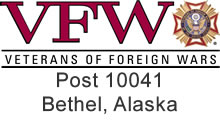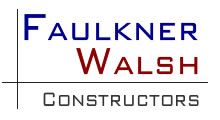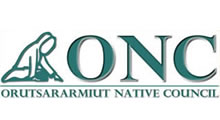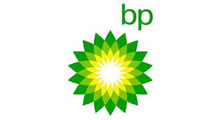Bethel River Cam
Thank You Sponsors!
NOAA Weather
Bethel, AK
Last Updated on Jun 5 2024, 2:53 am AKDT
Weather by NOAA
Current Conditions: Overcast
Temp: 32°F
Wind: West at 5mph
Humidity: 85%
Windchill: 27°F
Weather Forecast
The location could not be found.Post History…
August 2025 M T W T F S S 1 2 3 4 5 6 7 8 9 10 11 12 13 14 15 16 17 18 19 20 21 22 23 24 25 26 27 28 29 30 31 Visit BSAR YouTube Channel!
Get Updates Automatically!
Bethel Search and Rescue
Welcome to our Website!
Bethel Search & Rescue (BSAR) is located in Bethel, Alaska.
BSAR conducts search and rescue missions in Bethel and the surrounding villages in coordination with the Alaska State Troopers, Bethel Police, Village Public Safety Officers, and other SAR teams from area villages.To report a missing person in the Bethel region, call 911 or (907)545-HELP.
File a Trip Plan BEFORE You Go!
Support…
Bethel Search and Rescue is a 501(c)(3) non-profit that operates on the support of the people and organizations in the Yukon-Kuskokwim Delta region and beyond. By supporting BSAR, supporters become partners in SAR missions. Each supporter should know that when a SAR mission is completed or successful, they have made it possible to find lost victims. Many thanks to all of our supporters, both individuals and businesses.
Contact Us:
Bethel Search and Rescue
P.O. Box 2633
Bethel, AK 99559Hosted By
Admin Users
RULES OF THE ROAD FOR SAFE BOATING ON INLAND WATERS (RIVERS & LAKES) OF THE U.S.
With increasing boat traffic on the Kuskokwim River and some reports of near collision in narrow channels such as Church Slough. We thought it would be good to review some of the rules for safe boating. The following is based on U.S. Coast Guard Regulations and the respectful way People have been traveling on the Kuskokwim for gnerations.
BOATING WORDS:
- VESSEL – just about anything that floats and was made for carrying people
- PORT – left side of boat when you’re sitting in it – symbolized by a RED light at night
- STARBOARD – right side when you’re sitting in it – symbolized by a GREEN light at night
- STERN – back of the boat – often represented by a WHITE light – this could also mean a boat that is anchored and not moving
- BOW – the front of the boat
- BEAM – the width of a boat at its widest
- GIVE WAY VESSEL – the boat that must change its course and or speed
- STAND ON VESSEL – the boat that should stay on its course and speed
- OVERTAKING – catching up to and passing another boat that is traveling in the same direction as your boat
- CROSSING – when one boat is crossing in front of another boat
- MEETING – when two boats traveling in opposite directions meet – like in Church Slough
- RIGHT OF WAY – the boat that should keep going the way it is while another boat should change its course or slow down
- GENERAL RULES FOR BOATING SAFETY ON RIVERS & LAKES:
RIGHT OF WAY:
Generally the boat with the least amount of control has the right-of-way. There is a recognized order for this:
- A boat being overtaken – many times they don’t know you are coming up behind them
- A boat drifting without power – like a broken down boat or a boat with nobody in it
- A boat that has a harder time steering – like a boat pushing a log raft, towing another boat or a canoe/kayak
- A boat that needs deeper water than your boat – like a large boat or barge
- A boat that is fishing – like a boat drifting with a net or even checking a set net
- A sailing boat – not many on the Kuskokwim but every once in a while we see one
OVERTAKING:
Any boat overtaking any other boat must keep out the way of the boat being overtaken. The faster boat catching up to the slower boat is the give-way vessel and the slower one is the stand-on vessel. Whenever possible the faster boat should pass on the port side of the slower boat.
CROSSING:
Both International and Inland Rules state that when two power-driven vessels are crossing so as to involve risk of collision, the vessel which has the other on her starboard side (the give-way vessel) must keep out of the way.
As the give-way vessel it is your duty to avoid a collision. Typically, this means you must slow down or change direction to cross behind the other vessel (the stand-on vessel).
MEETING:
Each vessel in a meeting situation must change direction to starboard so that each will pass on the port side of the other. This is called “passing port to port”.
At night, you will recognize a head-on meeting situation if you see both red and green side lights at the same time. If possible you should turn to your right to show your port side (red light).
OPERATING IN A NARROW CHANNEL (like Church Slough):
First and foremost, you have to avoid larger vessels that can only travel in a channel. Even if your vessel is operating under the rules otherwise, you must give way to a boat that could potentially run aground or get into a collision if they left the channel.
Try and operate on the right edge of the channel. Be extra cautious if you come to a bend in the waterway, and can’t see traffic coming towards you.
Make sure to wear a life jacket and please don’t let anyone travel that has been drinking.
BSAR wishes everyone along the Yukon and Kuskokwim a safe fall traveling and hunting season.
Thank you.
1-24-15 BSAR UPRIVER ICE ROAD REPORT*:
Summary: Over the past several days the tribal and city governments of Napaimute, Chuathbaluk, Aniak, Kalskag, and Lower Kalskag have pooled their resources and coordinated efforts to establish a safe ice road between the Middle and Lower Kuskokwim. The following is a general description of what travelers can expect along the different sections of the Upriver Ice Road.
Upriver Route 1 Tuluksak to Lower Kalskag:
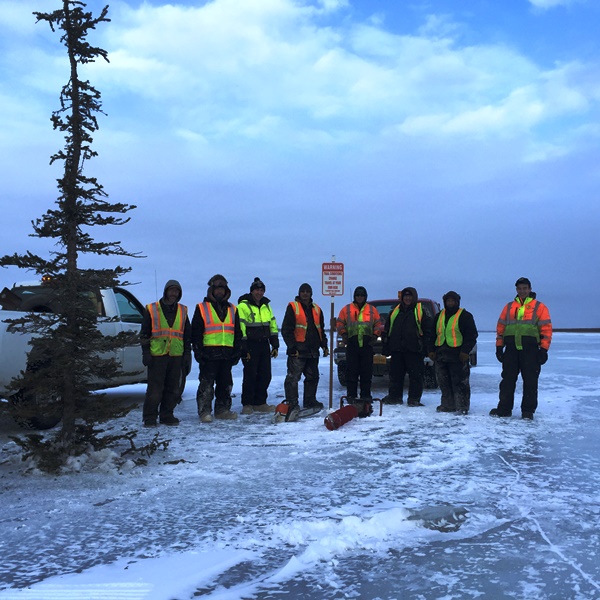
Lower Kalskag, Napaimute, & Crow Village Crew at Mile Post 0 of Upriver Route 1 near the mouth of the Tuluksak River L-R: Joe Simeon, Ludwig White, Ben Leary, Andrew Kameroff, Jr., Nikolai Savage, Mike Evan, Jr., Nick Levi, & Dakota Phillips
This route begins at the spruce tree near the lower end of the sandbar below the mouth of the Tuluksak River. Please note this is different than last year. Do not go into the Tuluksak River to pick up the ice road to Kalskag.
This route has been plowed to knock down the rough ice that still remained even after all the warm weather earlier in the winter.
Trail markers are poles with reflectors spaced 2/10’s of a mile apart. Small K300 type reflective stakes are installed in between the poles for extra safety. All KNOWN open holes in the vicinity of the road are marked with willows and BLUE reflectors.
Because this is a plowed road it is susceptible to drifting snow, but the road is still very passible.
Travel Tip: if the drifts in the road get too deep just move off the plowed road. There is very little snow off the road at this time.
Travel time between the two communities averages 90-120 minutes.

Paying Respects to Our Teacher: ice road crew visits the grave of legendary Kalskag Ice Road Pioneer, Dick Nash before heading out on the River
Upriver Route 2 Kalskag to Aniak:
This first 2/3 of this route upstream of Kalskag to Harry’s gravel pit is marked the same as Route 1 – with a combination of poles and stakes.
Most notable is the area below, at, and just above Harry’s gravel pit.
USE EXTREME CAUTION IN THIS AREA AND STAY BETWEEN THE POLES WITH RED & WHITE REFLECTORS

Panoramic View of the River just below the barge landing at Harry’s Gravel Pit: the red circles are OPEN WATER – the road is in between
It looks scary and is dangerous, but a lot of traffic has passed through this area safely. Travelers just need to stay between the poles.

This is the open hole on the right side of the panoramic picture. This just opened up last week – a result of the current eating the bank away under the ice and the hanging ice caving in leaving swift, deep open water. We’ve seen this before – just not in this area – the River’s always teaching us.
Once past the open water, due to extremely rough ice conditions the truck road is squeezed up against the bank for a short distance before making a rough crossing back to smoother ice. With more snow and wind this area will become a problem for truck travelers.

Truck trail is squeezed between the rough ice, half frozen overflow, and the cut bank just above Carl Morgan’s fish camp
After this short, stretch there is a rough crossing back to smoother ice. This is the roughest part of the whole ice road between Tuluksak and Chuathbaluk.
The remaining 1/3rd of the route above the gravel pit to Aniak is not marked for trucks at this time. The current truck trail in this section is following the K300 markers. Use caution following this route as it uses some side sloughs and beaches that may not be suitable for trucks as the ice continues to drop. A truck trail following the main channel and grading are planned for later this week.
Travel time between the two communities averages 75 to 90 minutes.
Upriver Route 3 Aniak to Chuathbaluk:
This is best part of the Upriver Ice Road system at this time. The route is well marked, has been graded smooth, and all open holes are marked. Travel time between the two communities averages 15-20 minutes.
Upriver Route 4 Chuathbaluk to Napaimute:
Reconnaissance of a safe truck route has just been completed. Ice thicknesses are good and smoothness is fair. A marked truck road will be established later this coming week.
THERE IS HOWEVER, EXTREME DANGER AT NAPAIMUTE UPSTREAM OF THE DUMP ROAD
There is unmarked open water and during the last warm spell the channel in front of the original village has blown out.This is common in the swift section of River. Even though the ice is 2′ – 3′ thick the force of increased water during melting times breaks the ice and blows it out on top of the original ice leaving dangerous swift open water. Anyone traveling through the Napaimute area must avoid the middle of the River.

Red Circle shows the broken up, blow out area in front of Napaimute. Below this the River is flooded with 2″ of new ice on top of the overflow
That’s the Upriver Ice Road Report.
A big thank you to the organizations and People of Lower Kalskag, Kalskag, Aniak, Chuathbaluk, and Napaimute for their work to establish safe ice roads between the Middle and Lower Kuskokwim.
*Please note that River and Ice Road conditions change daily. This is not an advisory that it is safe for travel. It is for informational purposes only.
12-13 BSAR Assists with McGrath Recovery Effort:

12-12 Panoramic view of the recovery area just downstream of McGrath – all pictures courtesy of Lucy Miller & Sam Samuelson
Despite all the efforts at open water marking along the Kuskokwim in recent days we were sorry to learn that a young man from McGrath was lost to open water near that community late last week. Casey Graham, age 24, drove into an open lead just around the bend from McGrath while enroute to Takotna.
It has been a long time since an under ice recovery effort has been conducted in that area. With that in mind and the extensive collective experience that BSAR has with this kind of work, we sent key member Sam Samuelson to McGrath to help our Upper Kuskokwim neighbors.

McGrath SAR members chain sawing away ice so that a new area of the river bottom can be checked. Notice the frosted trees – common near open water in cold weather –

Recovery efforts extend well past dark. McGrath is much farther north and the days are even shorter this time of the year.
As of the evening of December 13, the snow machine and driver’s helmet have been recovered from the water. Sam reports that the very strong current, slush under the ice, and water depth of 15′ – 18′ is making the good work being done more difficult but the crew is very positive and working well together. Community support is outstanding.

Wall tent heated with a space heater – a place for searchers to warm up and work on frozen equipment is very important when conducting a winter open water recovery. This is a well organized effort.
Our thoughts and prayers are with the McGrath search crew. A big thank you to Sam Samuelson for volunteering to go up and assist.
We are all hopeful for a successful recovery.
Thank you.
Additional Updates from below McGrath:
- the ice was still flowing above Stony River
- the River recently stopped moving at Sleetmute and the recent cold weather has allowed travel between there and Red Devil
- there was major ice shifting in the middle Kuskokwim during the last few days of November as far down as the Kolmokofsky River. Cold weather has glued the ice back together but it is rough.
- A trail has been established upstream from Aniak to Napaimute. No trail above Napaimute as there is major open water from there to Crooked Creek
- A lightly traveled trail has been established from Aniak to Kalskag. The largest open hole on the Kuskokwim is located below Harry’s gravel pit. It is over 2 miles long.
- A lightly traveled trail has been established from Kalskag to Tuluksak on the River.
- There is a marked overland trail from Aniak to Bogus Creek above Tuluksak
- There is one large UNMARKED open hole just off the trail above Akiak
- The holes at the upper end of Kuskokwaq Slough are marked.
- There is still an UNMARKED open hole on the east side of the River across from Wassillie B. Evan’s camp.

Chuathbaluk SAR members preparing to mark the 6 open holes between their village and Aniak. L-R: Jeffrey Hunter & Cameron Phillips

On November 29 the River 5 miles below Napaimute split all the way across. Above this the ice broke up and shifted all around. It’s all freezing back together again now.
Ice Thickness Safety Information:
Here is some ice load information gathered from various sources. Please note that not everyone agrees on the safe ice thicknesses for various loads and that there are many variables to consider when determining if the ice is safe for the load you want to put on it. This post is just for general information purposes.
From the Army Corp of Engineers:
Every winter it becomes very important to know when the ice is safe to use. Here are some guidelines for determining the safety of freshwater ice. The following table of safe loads is valid ONLY for ice that is clear and sound, with no flowing water underneath. It is not reliable for stationary loads. When in doubt, stay off the ice !
It is highly recommended that you familiarize yourself with the Safety on Floating Ice Sheets information by CRREL.
Loads on Ice
| Required Minimum Ice Thickness in inches | Description of Safe Moving Load |
| 1-3/4 | One person on skies |
| 2 | One person on foot or skates |
| 3 | One snowmobile |
| 3 | A group of people walking single file |
| 7 | A single passenger automobile |
| 8 | A 2-1/2 ton truck |
| 9 | A 3-1/2 ton truck |
| 10 | A 7 to 8 ton truck |
From www.engineeringtoolbox.com:
Safe loads for clear solid ice are indicated below:
| Thickness of Ice | Load or Activity | ||
| in | |||
| < 1 3/4 | STAY OFF | ||
| 1 3/4 | One person cross county skiing | ||
| 2 | One person on foot or skates | ||
| 3 | Snowmobile or smaller ATV, groups of people walking single line | ||
| 4 | Person ice fishing, good for walking individual | ||
| 7 | A small car | ||
| 8 | A 2 1/2 tons truck | ||
| 9 | A 3 1/2 tons truck | ||
| 10 | A 7 – 8 tons truck | ||
Note that ice strength is influenced by many factors
- age – newer black ice is stronger than old milky
- distance to shore – ice close to shore is weaker than ice farther out
- river outlets and inlets – ice close to outlets and inlets is weaker
- obstructions like rocks, trees and plants
- water currents
- cover of snow
This information must be used a general guide – keep off the ice if you are not absolutely sure.
Taking Care of Business: BSAR Marks Dangerous Open Water Area in Straight Slough

12-4 Straight Slough Open Water Marking Map: red circles are open water, yellow lines are where willow markers with BLUE reflectors were spaced 15 feet apart. Straight Slough is 1,000 feet wide at the lower end and 1,200 feet wide at the upper end
Today an 11 person BSAR team marked off both ends of Straight Slough to discourage travel through that area. There are still three open holes in Straight Slough. This is more than we have ever seen in the Slough – especially in December.
Because of the unusual number of open holes, at Thursday night’s BSAR planning meeting it was agreed that it would be better to mark across the entire width of both the lower and upper ends of Straight Slough than to try to mark each individual hole. This is the first time that BSAR has completely marked off any part of the River in the Bethel area. We hope that this will send a clear message that the Slough should be avoided completely – for now.
BSAR would like to remind People that BLUE REFLECTORS MEAN OPEN WATER – STAY AWAY.
Good work by a good crew. With the major danger in the Bethel area taken care of, BSAR will begin reaching out to our neighboring villages to assist them with open water marking in their areas. Any village SAR teams needing help, please contact BSAR.
Thank you to all that came out to help today.




















